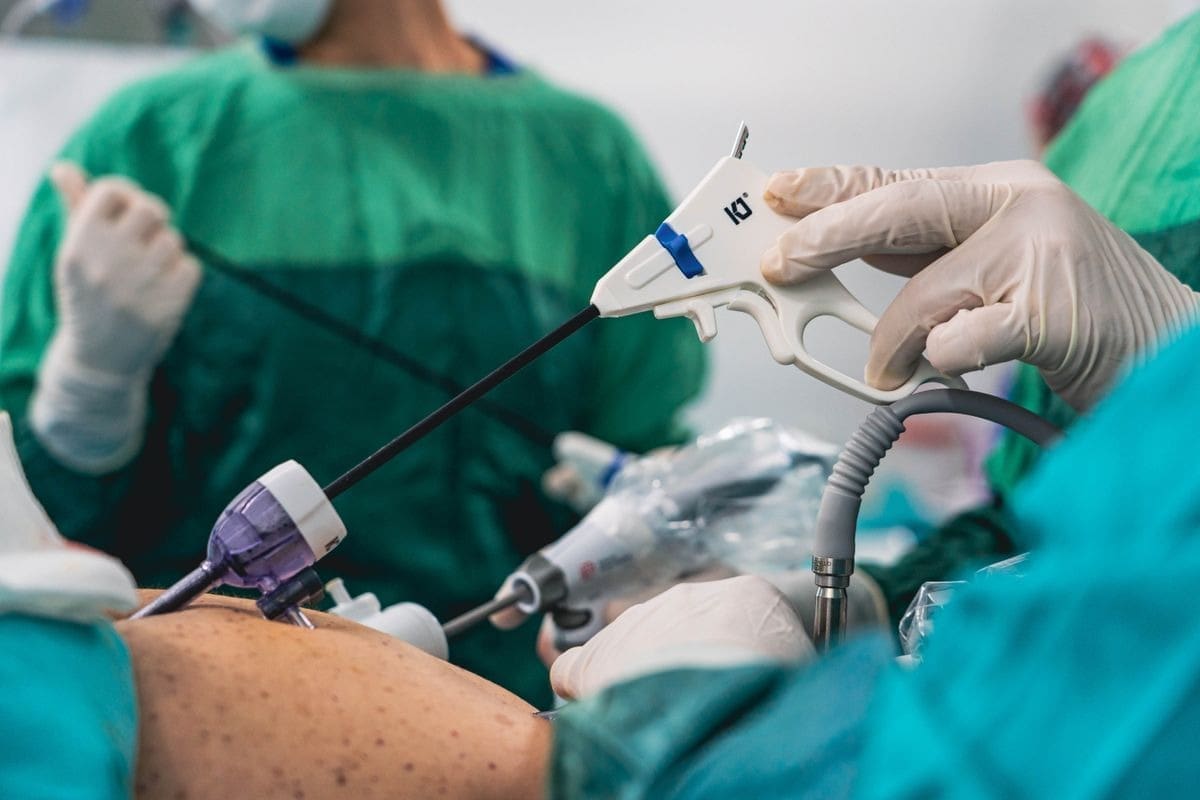Last Updated on November 26, 2025 by Bilal Hasdemir

We often look back on the past to understand the breakthroughs of the present. The development of chemotherapy is a prime example, rooted in the devastating history of chemical warfare. Mustard gas, used in World War I, was found to cause severe damage to rapidly dividing cells, a discovery that laid the groundwork for modern cancer treatment.
Researchers observed that the gas suppressed bone marrow and lymphoid tissues, leading to the idea that similar compounds could be used to target cancer cells. This marked the beginning of chemotherapy therapy, a treatment that has since evolved to save countless lives.
The story of the first chemotherapy man is a testament to the relentless pursuit of medical advances. It highlights the transition from a destructive chemical weapon to a life-saving medical treatment.
Key Takeaways
- The use of mustard gas in warfare led to the discovery of its effects on rapidly dividing cells.
- This discovery was pivotal in the development of chemotherapy as a cancer treatment.
- The first applications of chemotherapy therapy were based on observations of the damage caused by mustard gas.
- The evolution of chemotherapy has transformed it into a targeted and effective treatment for various cancers.
- Today, chemotherapy remains a cornerstone of cancer care, with ongoing research aimed at improving its efficacy and reducing side effects.
The Deadly Origins: Mustard Gas as a Chemical Weapon
World War I saw the introduction of mustard gas, a deadly chemical agent that would later play a crucial role in medical history. The deployment of mustard gas on the battlefields of World War I marked one of the most horrific episodes in the history of warfare, causing widespread suffering and casualties.
World War I and Chemical Warfare
The introduction of chemical warfare during World War I was a significant turning point in military history. Mustard gas, in particular, was used extensively due to its ability to cause severe blistering and damage to the eyes, skin, and respiratory system. The effects were not only immediate but also long-lasting, with many soldiers suffering from chronic health issues long after the initial exposure.
Physiological Effects of Mustard Gas Exposure
Exposure to mustard gas led to a range of severe physiological effects. The gas caused blistering of the skin, damage to the eyes, and respiratory problems. The most significant impact, however, was on rapidly dividing cells, a characteristic that would later be crucial in its application to cancer treatment. The table below summarizes the immediate and long-term effects of mustard gas exposure.
| Effect Type | Immediate Effects | Long-term Effects |
|---|---|---|
| Skin Exposure | Severe blistering, redness | Chronic skin issues, scarring |
| Eye Exposure | Burning, temporary blindness | Potential permanent vision loss |
| Respiratory Exposure | Coughing, difficulty breathing | Chronic respiratory problems |
Understanding the physiological effects of mustard gas was crucial in laying the groundwork for its later medical applications, particularly in the development of chemotherapy.
Accidental Discovery: From Warfare to Medicine
The horrors of World War I’s chemical warfare eventually contributed to a major breakthrough in the treatment of cancer. As we look back, it becomes clear that the aftermath of the war brought unexpected insights into the medical community regarding the effects of mustard gas.
Post-War Medical Observations
After World War I, medical professionals began to notice unusual patterns in soldiers exposed to mustard gas. Severe leukopenia and other bone marrow suppressive effects were observed in many of these individuals. This led researchers to investigate the potential therapeutic applications of mustard gas derivatives.
We observed that the exposure to mustard gas resulted in significant changes to the blood cells of affected soldiers. These observations were crucial in understanding the impact of mustard gas on rapidly dividing cells.
The Connection Between Cell Division and Mustard Gas
Further research revealed that mustard gas interfered with cell division, particularly affecting cells that divided rapidly. This insight was pivotal in understanding its potential use in treating cancers characterized by rapid cell division.
- The ability of mustard gas to suppress bone marrow activity.
- Its effect on lymphoid tissues.
- The potential to target rapidly dividing cancer cells.
These findings laid the groundwork for the development of chemotherapy as we know it today. The connection between cell division and mustard gas exposure became a cornerstone in the development of cancer treatments.
As we continued to study the effects of mustard gas, we began to see its potential in treating various types of cancer. This marked the beginning of a new era in cancer therapy, one that would eventually lead to the development of various chemotherapy options.
Scientific Breakthrough: Understanding Cellular Impact
The investigation into mustard gas exposure revealed significant effects on rapidly dividing cells, paving the way for modern chemotherapy. As we explored the physiological impact of this chemical weapon, we gained a deeper understanding of its effects on various bodily systems.
Effects on Bone Marrow and Lymph Nodes
Research showed that mustard gas severely affected bone marrow, leading to a decrease in blood cell production. This was particularly concerning as bone marrow is responsible for producing blood cells crucial for oxygen transport, immune response, and clotting.
The impact on lymph nodes was also significant, as they are key components of the immune system. Exposure to mustard gas resulted in lymph node damage, further compromising the body’s ability to fight off infections.
The Mechanism of Action on Rapidly Dividing Cells
We discovered that mustard gas and its derivatives, known as chemotherapy drugs, work by targeting cells that divide rapidly. This mechanism is crucial in cancer treatment, as many cancer cells exhibit rapid division.
The effect of these chemicals on rapidly dividing cells can be summarized in the following table:
| Cell Type | Effect of Mustard Gas | Clinical Implication |
|---|---|---|
| Rapidly Dividing Cells (e.g., Cancer Cells) | Cell Division Inhibited | Tumor Growth Slowed or Stopped |
| Bone Marrow Cells | Reduced Blood Cell Production | Increased Risk of Infection and Anemia |
| Lymph Nodes | Immune System Compromised | Reduced Ability to Fight Infections |
Understanding these effects was crucial for developing chemotherapy resources that could mitigate some of the harmful side effects while maintaining the therapeutic benefits.
The Development of Nitrogen Mustard
The discovery of nitrogen mustard marked a significant turning point in the history of chemotherapy. As we explore the transformation of this compound from a chemical weapon to a potential cancer treatment, it becomes clear that the journey was both complex and groundbreaking.
From Chemical Weapon to Potential Treatment
Nitrogen mustard, a derivative of mustard gas, was initially developed for use in chemical warfare. However, its toxic effects on rapidly dividing cells led researchers to investigate its potential as a therapeutic agent. The ability of nitrogen mustard to target and destroy cancer cells made it an attractive candidate for cancer treatment.
“The observation that mustard gas could suppress the bone marrow and lymphoid tissues led to the hypothesis that it might be useful in treating lymphomas and other cancers.”
This hypothesis was the foundation upon which the early research into nitrogen mustard as a cancer treatment was built.
Early Laboratory Research and Animal Testing
Early laboratory research involved studying the effects of nitrogen mustard on various cell types, particularly those that divided rapidly. Animal testing played a crucial role in understanding the compound’s mechanism of action and its potential side effects. Researchers observed that nitrogen mustard could induce significant tumor regression in animal models, providing a promising indication of its therapeutic potential.
The success of these early studies paved the way for further investigation into the use of nitrogen mustard in human subjects. As we moved forward, it became clear that while nitrogen mustard held great promise, it also came with significant chemotherapy side effects that needed to be carefully managed.
J.D.: The First Chemotherapy Man and His Legacy
The journey of J.D., the first patient to be treated with chemotherapy, is a testament to medical innovation. We begin by understanding who J.D. was and the circumstances that led to his treatment.
Patient Background and Lymphoma Diagnosis
J.D. was diagnosed with lymphoma, a type of cancer that affects the immune system. His condition was severe, and conventional treatments at the time offered little hope. The diagnosis and subsequent treatment were pivotal in the history of oncology.
The Experimental Treatment of 1942
In 1942, J.D. underwent an experimental treatment that would change the course of cancer therapy. The treatment involved the use of nitrogen mustard, a derivative of the chemical weapon mustard gas. This marked a significant shift from the use of toxic chemicals as weapons to their application in medicine.
The story of J.D. is not just about a patient; it’s about the beginning of a new era in cancer treatment. His legacy continues to influence oncology today, reminding us of the power of medical innovation in the face of adversity.
Documenting Success: Tumor Regression and Clinical Evidence
The successful treatment of J.D. provided crucial evidence for the potential of chemical cancer therapy. This case was pivotal in demonstrating the efficacy of chemotherapy, marking a significant milestone in the history of cancer treatment.
Observable Changes in J.D.’s Condition
Following the administration of nitrogen mustard, J.D.’s condition showed remarkable improvement. The treatment led to significant tumor regression, with observable changes in his overall health. As documented in his medical records, the regression of his tumor was a critical indicator of the treatment’s effectiveness.
According to the clinical evidence, J.D.’s response to the treatment was not only positive but also provided valuable insights into the potential of chemotherapy. As noted in a study published on this platform, the use of nitrogen mustard in similar cases yielded promising results, supporting the initial findings from J.D.’s treatment.
“The use of nitrogen mustard in cancer treatment marked the beginning of a new era in chemotherapy, offering hope to patients with previously untreatable conditions.”
Establishing the Proof-of-Concept for Chemical Cancer Therapy
The success of J.D.’s treatment played a crucial role in establishing the proof-of-concept for chemical cancer therapy. The clinical evidence gathered from this case, along with subsequent studies, helped to validate the efficacy of chemotherapy as a viable treatment option for various types of cancer.
| Treatment Aspect | Outcome | Clinical Significance |
|---|---|---|
| Tumor Regression | Significant reduction in tumor size | Positive response to chemotherapy |
| Patient Condition | Improved overall health | Enhanced quality of life |
| Clinical Evidence | Valuable data for future research | Established proof-of-concept for chemotherapy |
As we continue to advance in cancer treatment, the legacy of J.D.’s treatment remains significant. It not only paved the way for the development of new chemotherapy agents but also underscored the importance of continued research into the chemotherapy cost and accessibility for patients worldwide.
From Experimental Treatment to Standard Protocol
The transition of chemotherapy from an experimental treatment to a standard protocol marked a significant milestone in cancer treatment. As we explore this journey, it becomes clear that the evolution was driven by a combination of clinical observations, scientific breakthroughs, and rigorous testing.
Early Adoption in Medical Practice
The early adoption of chemotherapy in medical practice was a crucial step in establishing its role in cancer treatment. Initially, the use of nitrogen mustard and other early chemotherapeutic agents was met with skepticism. However, as clinical evidence mounted, oncologists began to embrace these treatments, recognizing their potential to significantly impact patient outcomes.
We observed that the first patients treated with chemotherapy experienced remarkable, albeit often temporary, tumor regressions. These early successes sparked further research and encouraged clinicians to refine their approaches, laying the groundwork for the development of modern chemotherapy protocols.
Refinement of Dosage and Administration
A critical aspect of chemotherapy’s evolution was the refinement of dosage and administration techniques. Researchers worked to optimize dosing schedules, balancing the need for effective tumor control against the risk of unacceptable toxicity. This involved extensive preclinical and clinical studies to identify the most effective and safest treatment regimens.
As our understanding of chemotherapy’s mechanisms of action improved, so too did our ability to tailor treatments to individual patient needs. The development of combination chemotherapy regimens, which use multiple agents with different mechanisms of action, further enhanced treatment efficacy.
Expanding Treatment to Different Cancer Types
Initially, chemotherapy was primarily used to treat certain types of lymphomas and leukemias. However, as its effectiveness became more widely recognized, clinicians began to explore its application in a broader range of malignancies. Today, chemotherapy is a cornerstone of treatment for many common cancers, including breast, lung, and colorectal cancer.
We have seen significant advances in the use of chemotherapy for different cancer types, with ongoing research aimed at identifying new indications and optimizing treatment protocols for specific disease subtypes. The integration of chemotherapy with other modalities, such as surgery and radiation therapy, has also become more sophisticated, allowing for a more comprehensive approach to cancer care.
Modern Chemotherapy’s Mustard Gas Heritage
The development of modern chemotherapy has its roots in the unexpected place of chemical warfare, specifically in the use of mustard gas during World War I. This connection may seem surprising at first, but it highlights the significant impact that the study of mustard gas’s effects on the human body had on the development of cancer treatments.
Contemporary Drugs Derived from Nitrogen Mustard
The discovery that mustard gas could suppress bone marrow and lymphoid tissues led to the development of nitrogen mustard derivatives. These compounds were among the first to be used in the treatment of various cancers, including lymphomas and leukemias. Today, drugs such as cyclophosphamide and chlorambucil are still used, demonstrating the lasting legacy of early research into mustard gas.
As we continue to advance in cancer treatment, the original principles behind nitrogen mustard derivatives remain relevant. Modern chemotherapy protocols often combine these older drugs with newer, targeted therapies to achieve better outcomes.
Current Applications in Cancer Treatment
Nitrogen mustard derivatives are used in various chemotherapy regimens, often in combination with other agents. For example, cyclophosphamide is a key component of many protocols for treating breast cancer, lymphoma, and leukemia. The ability to tailor treatment to individual patient needs has improved outcomes and reduced side effects.
“The development of chemotherapy is a prime example of how understanding the mechanism of action of a toxic substance can lead to the creation of life-saving treatments.”
Balancing Efficacy and Side Effects
One of the ongoing challenges in chemotherapy is balancing the efficacy of treatment with the potential for side effects. While nitrogen mustard derivatives are effective against certain cancers, they can also cause significant toxicity. Modern oncology focuses on optimizing dosing regimens and combining drugs to minimize adverse effects while maintaining therapeutic efficacy.
As we move forward, the lessons learned from the development and use of nitrogen mustard derivatives continue to inform our approach to cancer treatment. By understanding the historical context and ongoing evolution of chemotherapy, we can better appreciate the complexities of contemporary cancer care.
Advancing Cancer Treatment: From Mustard Gas to Precision Medicine
The journey of cancer treatment has been transformative, evolving from the early days of chemotherapy derived from mustard gas to the sophisticated era of precision medicine. This evolution reflects significant advancements in our understanding of cancer biology and our ability to tailor treatments to individual patients.
The Evolution of Targeted Therapies
Targeted therapies have revolutionized cancer treatment by focusing on specific molecular targets that are involved in the growth and progression of cancer cells. Unlike traditional chemotherapy, which affects both cancerous and healthy cells, targeted therapies aim to minimize damage to normal cells, thereby reducing side effects and improving patient outcomes.
We have seen the development of various targeted therapies, including monoclonal antibodies, tyrosine kinase inhibitors, and other agents that target specific genetic mutations or proteins. These therapies have shown significant promise in treating various types of cancer, offering new hope to patients who have not responded to conventional treatments.
Innovative Approaches Based on Original Principles
Building on the principles established by early chemotherapy agents, researchers have continued to innovate and develop new treatments. One such approach is the use of combination therapies, where multiple agents are used together to target different aspects of cancer cell biology. This strategy can enhance treatment efficacy and reduce the likelihood of resistance.
Another innovative approach is the development of immunotherapies, which harness the power of the immune system to fight cancer. By stimulating the immune system to recognize and attack cancer cells, immunotherapies offer a promising avenue for treating a range of cancers.
Liv Hospital’s Contribution to Modern Cancer Treatment
At Liv Hospital, we are committed to providing cutting-edge cancer care that incorporates the latest advancements in precision medicine and targeted therapies. Our team of experts works closely with patients to develop personalized treatment plans that take into account their unique genetic profiles, medical histories, and lifestyle factors.
We utilize state-of-the-art diagnostic tools and treatment modalities, including next-generation sequencing and advanced imaging techniques, to ensure that our patients receive the most effective and appropriate care. Our multidisciplinary approach involves collaboration between oncologists, surgeons, radiologists, and other specialists to provide comprehensive care.
By combining innovative treatments with a patient-centered approach, we aim to improve outcomes and enhance the quality of life for our patients. As cancer treatment continues to evolve, we remain at the forefront, committed to delivering world-class care that addresses the complex needs of our patients.
Conclusion: The Transformative Journey from Weapon to Lifesaving Treatment
We have witnessed a remarkable transformation in cancer care, from the devastating effects of mustard gas as a chemical weapon to its pivotal role in developing lifesaving chemotherapy treatments. The journey highlights the importance of continued innovation and support in oncology therapy, ensuring that cancer patients receive comprehensive care, including chemotherapy support and radiation therapy.
At Liv Hospital, we remain committed to advancing cancer treatment, focusing on managing chemotherapy symptoms and improving patient outcomes. Our oncologists work closely with patients to tailor treatment plans, including chemotherapy cycles and chemo therapy drugs, to achieve the best possible results. We celebrate chemotherapy success stories and continue to push the boundaries of oncology therapy, striving for higher chemotherapy success rates.
As we move forward, we recognize the significance of supporting cancer survivors and providing them with the necessary resources to thrive. Our dedication to cancer care is unwavering, and we continue to work towards a future where cancer treatment is more effective, personalized, and accessible to all.
FAQ
What is the connection between mustard gas and chemotherapy?
Mustard gas, used as a chemical weapon during World War I, was found to damage rapidly dividing cells, leading researchers to explore its potential as a cancer treatment, ultimately resulting in the development of chemotherapy.
How did the effects of mustard gas on the human body contribute to the development of chemotherapy?
The observation that mustard gas damaged rapidly dividing cells, such as those in bone marrow and lymph nodes, led researchers to investigate its therapeutic potential in treating cancers characterized by rapid cell division.
What is nitrogen mustard, and how is it related to mustard gas?
Nitrogen mustard is a derivative of mustard gas that was developed as a potential cancer treatment. It works by damaging the DNA of rapidly dividing cancer cells, thereby inhibiting their growth.
What were the early outcomes of chemotherapy treatment, as seen in the case of J.D.?
J.D., one of the first patients to receive chemotherapy, experienced significant tumor regression, providing critical evidence for the efficacy of this treatment approach.
How has chemotherapy evolved since its initial development?
Chemotherapy has evolved significantly, with advancements in dosage and administration techniques, as well as its application to various types of cancer, making it a widely accepted treatment protocol.
What role do drugs derived from nitrogen mustard play in contemporary cancer treatment?
Drugs derived from nitrogen mustard continue to be used in cancer treatment, offering effective therapeutic options for various cancers, although ongoing research aims to balance their efficacy with the management of side effects.
How has cancer treatment advanced beyond traditional chemotherapy?
Advances in cancer treatment have led to the development of targeted therapies and precision medicine, offering more tailored and effective treatment options for patients, as seen in the work of institutions like Liv Hospital.
What is the significance of the story of the first chemotherapy patient?
The story of J.D., the first chemotherapy man, highlights the transformative journey of chemotherapy from an experimental treatment to a standard cancer treatment protocol, paving the way for modern cancer care.
What are the ongoing challenges in chemotherapy treatment?
Ongoing challenges in chemotherapy include managing side effects, optimizing dosage and administration, and expanding treatment options to various cancer types, driving continued innovation in cancer care.
How does Liv Hospital contribute to modern cancer treatment?
Liv Hospital contributes to modern cancer treatment by providing advanced, comprehensive care, incorporating the latest research and technologies, such as targeted therapies and precision medicine, to improve patient outcomes.








